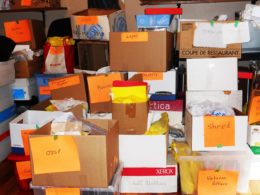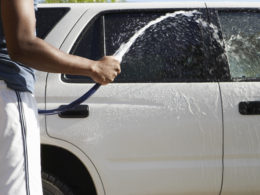The importance of reducing, reusing, and recycling is increasingly becoming evident with the climate change and various environmental problems. Every day, every trash you discard contributes to the ever-growing pollution on the planet that causes greenhouse gases amongst other things. In fact, every plastic you discard will most likely last longer on Earth than you will. This proves that the biodegradation process of plastics and other synthetic materials is an incredibly slow process. These things pile up and inhibit or interfere with many of the normal cycles that occur on the planet. That’s why it’s very important that you start reducing, reusing, and recycling now. The best place to start is at home. Here are three tips on recycling at home.
Tip #1: Know what can be recycled
Most items can actually be recycled especially those that are found in your home.
• Paper and cardboard can be reused for many other purposes, even just for the sake of keeping it away from the trash bin for longer. For instance, you can use crumpled up newspaper for packaging fragile items, or glossy paper for wrapping gifts, or magazines for making envelopes. Cardboard, on the other hand, can be used for tons of DIY crafts such as wallets or gift boxes.
• Plastics do not break easily. Although this makes it harmful to the environment, it is what makes it great for reusing and recycling. You can reuse plastics many times without it losing quality. Plastics can even be washed so you can reuse one plastic item many times before you even consider throwing it away.
• Glass is another material that can be reused many times without it losing quality. It can also be washed repeatedly or even buffed to make it look new.
• Metals are very recyclable items. There are a lot of recycling centers that accept many types of metals.
• Electronic goods can be recycled as well though not really on your own. There are many electronic companies or organizations that accept electronic items without minding its specs or if it is still functional or not. Electronic goods are hazardous so it’s better not to try recycling it on your own.
Know your hazardous wastes and dispose of it immediately. Most hazardous waste cannot be recycled. This includes batteries, cosmetics, paint, medicines, used bandages, and more. There are also some dangerous wastes that are best discarded than recycled such as razor blades and broken glass.
Tip #2: Sort your trash
To make recycling easier, sort your trash according to the material it is made of. Separate plastics, paper, metals, electronics, and more from each other. Designate a bin for each type of recyclable material. Keep in mind though that the bin you’re using for a certain type of trash should be capable enough to hold that kind of material. For instance, you can use a plastic bag to store other plastic bags but you cannot use it to store metals.
It’s useful to sort the plastics as well. Nearly all plastics are labelled with a number enclosed in three arrows forming a triangle. This is used to identify the type of plastic. Segregate your plastics according to this number as well, if possible.
Also, remember to rinse all containers before placing them in their designated bin. Don’t ever mix wet trash with dry as this could hinder the recyclability of the dry items such as paper. Label your bins correctly. If you use large bins, you can even place it outside so that other members of your community can make use of it as well.
Tip #3: Visit your local recycling centers
The reason why many people are not fond of recycling is because they don’t really know what else to make use of the recycled materials for. The best solution for this is to visit your local recycling centers and see which materials they accept. In some places, there are a variety of recycling centers that accept different kinds of materials each. Set up your bins according to each recycling center then donate your items to keep it from accumulating in your house.








